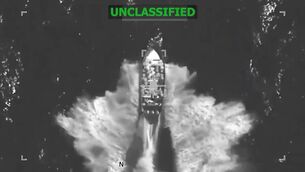Iraq still at war a year after the fall of Baghdad
Iraq remains a country at war. More than 460 Iraqis, at least 40 Americans and two other coalition soldiers have been killed this week in fighting against Shi’ite militia loyal to radical anti- US cleric Muqtada al-Sadr.
It’s a far cry from that defining moment on April 9, 2003, when US marines surrounded by cheering Iraqis pulled down the black, bronze statue of Saddam at Fardous Square in central Baghdad.














